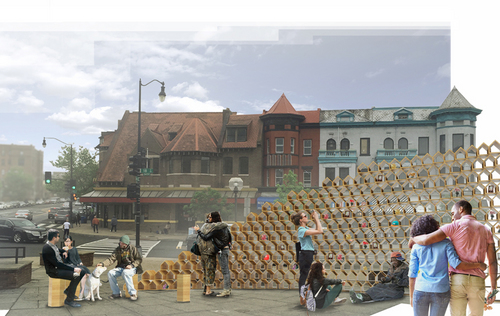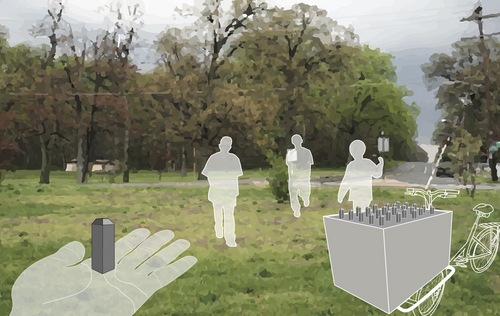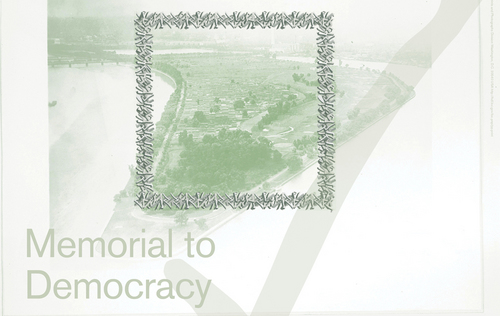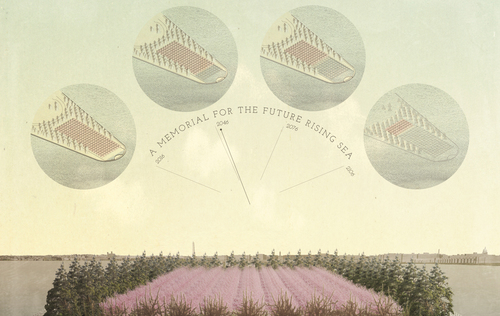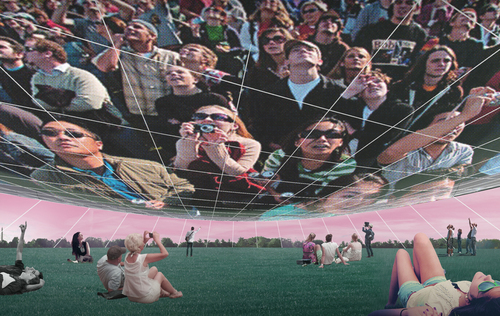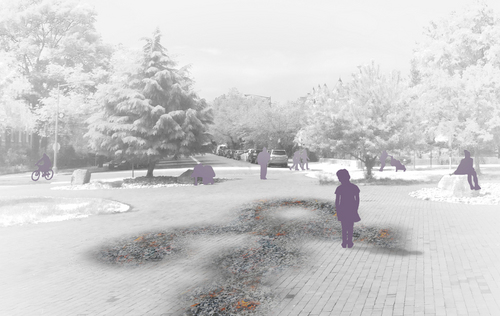How should DC’s memorials be different in the future?
This article was first published on June 8, 2016 (you can learn more about the competition’s winners here). The concepts and conversation around design are still interesting, so we are sharing it again.
Washington remembers national events through big, permanent structures. Is that the only way to do it? A competition is asking designers to come up with alternatives that are less expensive, more interactive, and more flexible.
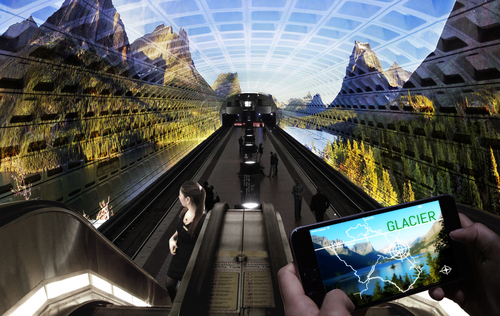
American Wild would bring National Parks into metro with video and audio projections. Image from NCPC.
The Memorials for the Future competition asks designers to rethink commemmoration. Sponsored by the National Park Service, the National Capital Planning Commission, and an architecture nonprofit called the Van Alen Institute, they will announce four finalists tonight, from a pool of 30 semifinalists.
The sponsors are looking ways out of a big problem: too many people want to leave a permanent mark on the National Mall. Unfortunately, the Mall has run out of space. Worse, designs have gotten bigger over time.
Since it’s hard for Congress to say no, the competition is a way to show future memorial sponsors alternatives. Maybe a commission will consider a digital memorial instead of wedging bronze into a grass triangle. Perhaps people would rather remember their cause if it brought trees to a neglected neighborhood instead of another statue kids can’t play on.

Re-frame, Re-cast, Re-tell: Freedom Stories along the Anacostia is a return to memorial trees, in underserved neighborhoods. Image from NCPC.
Judges already picked picked 30 semifinalsts, which are online. Each one consists of a single image and a paragraph that proposes a novel way to commemorate an overlooked issue.
The ideas are little out there. And most descriptions come in overcomplicated verbiage. That’s OK. This kind of competition is all about coming up with novel ideas in a risk-free, low cost environment, winnowing them down, and refining them. That will start Tonight when jury of planners, architects, and administrators announces five finalists.
Spending a few thousand to explore some ideas ahead of time is a great way to not spend many millions on something suboptimal later. Think of it as design research.
Politicians have become obsessed with size.
Why change at all? Washington is known around the world for large memorials that use space and sculpture to create an emotional response.
This image is only 100 years old. Before the McMillan Commission, the National Mall was a winding garden like New York’s Central Park, littered with illustrative monuments, like statues and memorial trees. The McMillan Commission’s philosophy changed to a much more immersive format.
Generally, before then Washington’s memorials were like the 1876 Emancipation Memorial in Lincoln Park: a statue with a clear message standing in a public square. Compare that to the 1921 Lincoln Memorial. It’s a building at the end of a two-mile long axis. Visitors must climb steep stairs to enter into a spare, dimly-lit room, and reflect upon an ambiguous psychological portrait of the president.
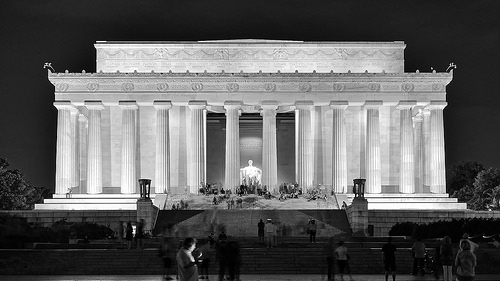
Architect Henry Bacon used technology unavailable in 1876, like electric light to increase the dramatic effect. Photo by Rizwan Sheikh on Flickr.
The new way of commemorating worked. So, memorials started taking over more space. The problems was compounded as modern tastes started asking for nuanced narratives and educational elements. The embodiment of this trend is probably the FDR Memorial completed in 1997. Presenting a panoramic take of Roosevelt’s presidency, it takes criticism for being scattershot fantasy and not nearly inclusive enough. All that over an enormous 7.5 acre site with expensive foundation work.
What else could we try?
Many of the design pitches reflect these trends away from a single focus and an unchanging narrative.
The most radical of the sketches crowdsource their content and last for only a short period of time. These follow in the footsteps of the AIDS Memorial Quilt, which assembled thousands of grave-sized fabric quilts, hand made by a deceased person’s loved one into a massive display. Aggregated, the units of personal sentimentality showed it to be a public crisis.
Home for the Homeless would mimic how social media’s digital records in physical form around the city by giving physical spaces to tell homeless stories. MonYouMent lets people mark out their own important sites.
Others fall into what the art world calls “indexical,” meaning that it’s an abstract but physical connection to some event, rather than a work that’s designed to represent something and therefore laden with its creators biases, like Abraham Lincoln in front of a grateful freed slave.
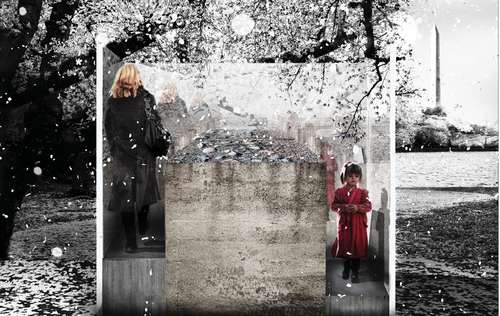
Content of Confinement transports a literal piece of Topaz Internment Camp to the Tidal Basin. Image from NCPC.
That’s what you see in re-doing the topic of the existing granite and bronze Memorial to Japanese-American Patriotism in World War II with a literal piece of the ground in an internment camp amid the Japanese-donated Cherry Blossom trees on the Tidal Basin.
The Memorial to Democracy asks visitors to assemble abstract markers into shapes, each symbolizing a person.
Or, there’s Climate Chronograph on Hains Point, which disappears under rising waters to mark out melting ice caps.
Multiple ideas rely on smartphones to remember people. Projections onto public surfaces are one way, more introverted proposals are augmented reality and audioguide options that anyone could access to interpret the world around them.
More ambitious are the ones that try to use those digital programs as mediums in public. There’s something powerful about showing novel content — provided it’s not hijacked into Memorial McMemorialface, but what’s the public benefit of content that can be accessed on a phone in bed at home?
The one that I really do like is the Cultur-Altar. It’s built around a ritual, rather than an object. Artifacts of memory are brought to Eastern Market during commemoration and burned afterward. The idea of letting go of artifacts while keeping a memory alive is more about building social ties than making a mark.
After all, Washington is a living city and the mall has been its most evocative when the buildings fade into backdrops, whether for rallies or picnics.




